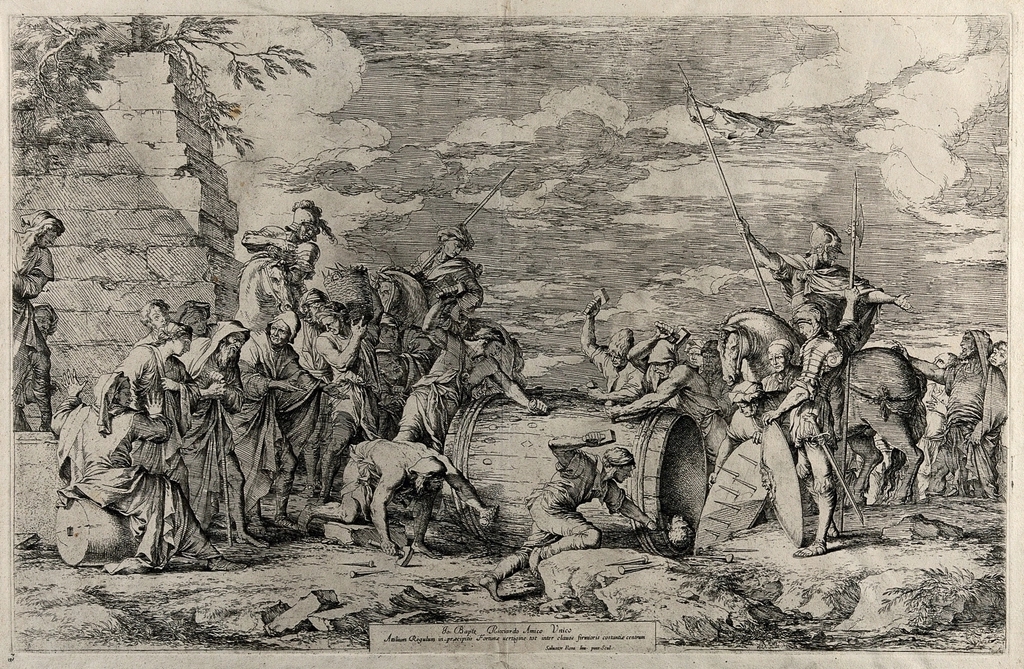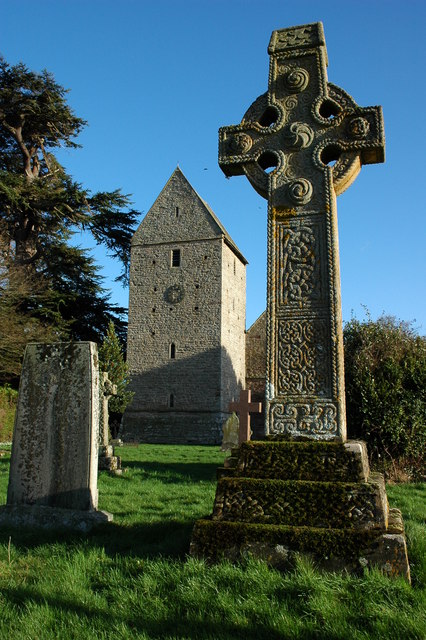In the ancient Mediterranean world, two colossal empires clashed over dominance, their struggle echoing through the annals of history. Join us as we delve into the epic tale of the First Punic War: a saga of naval prowess, strategic brilliance, and the birth of Rome as a naval superpower.
Historical Context
In the tumultuous 3rd century BCE, the Mediterranean world witnessed the rise of two formidable powers: Rome and Carthage. Rome, having consolidated its influence over the Italian Peninsula through relentless expansion and military prowess, now looked beyond its shores for further conquests. Meanwhile, Carthage, a Phoenician city-state located in present-day Tunisia, stood as the preeminent maritime power of the era.
Carthage’s dominance stemmed from its mastery of sea trade routes, which spanned from North Africa across the Mediterranean to regions as far-reaching as Iberia and beyond. This maritime supremacy not only enriched Carthage but also enabled the city to wield considerable influence over its territories and client states.
On the Italian mainland, Rome had emerged victorious from a series of conflicts with neighbouring city-states, gradually extending its control over central and southern Italy. This expansionist policy, coupled with its formidable military machine and burgeoning republican institutions, set the stage for Rome’s ambition to assert its influence beyond the Italian Peninsula.
The Mediterranean itself was a theatre of intense geopolitical competition. Various city-states, kingdoms, and tribal confederations vied for dominance, each seeking to secure lucrative trade routes and resource-rich territories. Sicily, an island strategically positioned at the crossroads of these routes, became a focal point for contention among the regional powers.
Against this backdrop of rising tensions and territorial ambitions, the stage was set for a collision between Rome and Carthage, destined to reshape the course of ancient history.
The Cause of Conflict
The seeds of conflict between Rome and Carthage found fertile ground on the island of Sicily. This strategically located landmass, situated at the heart of the Mediterranean, was coveted for its fertile soils and crucial position along vital trade routes. Both Rome and Carthage eyed Sicily as a gateway to further expansion and economic dominance.
The tensions escalated when a dispute erupted in Messana (modern-day Messina), a city on the eastern coast of Sicily. The inhabitants of Messana were caught between warring factions within the city and sought assistance from both Rome and Carthage. Each power saw an opportunity to intervene, hoping to gain influence over Messana and thereby secure a foothold in Sicily.
Carthage, with its established naval supremacy and interests in maintaining control over Sicilian trade, responded swiftly by dispatching forces to support one of the factions in Messana. Rome, sensing a threat to its growing influence in the region, saw Carthaginian intervention as a direct challenge to its expanding territorial ambitions.
The conflict in Messana quickly escalated into a wider confrontation between Rome and Carthage, each side mobilising their military resources to protect their interests and assert dominance over Sicily. This initial clash in Sicily marked the beginning of what would become known as the First Punic War. This protracted struggle would test the military capabilities, economic resources, and political resolve of both ancient powers.
Major Battles
Throughout the First Punic War, the battleground shifted between land and sea, each theatre showcasing the evolving strategies and resilience of Rome and Carthage.
On the shores of Sicily, the Battle of Agrigentum saw Roman legions clash with Carthaginian forces in 262 BCE. This engagement marked a significant early victory for Rome, solidifying its foothold on the island and demonstrating the effectiveness of its land-based military tactics against Carthage’s formidable armies.
At sea, the Battle of Mylae in 260 BCE became a defining moment in naval warfare. Rome, under the leadership of Gaius Duilius, employed an innovative tactic: the Corvus, a boarding bridge that allowed Roman troops to engage in hand-to-hand combat on enemy ships. This victory not only secured Rome’s naval superiority in the western Mediterranean but also marked a shift in naval warfare tactics.
The conflict escalated with Rome’s bold invasion of Carthaginian territory in North Africa in 256 BCE. Despite initial successes, the Romans faced fierce resistance and suffered setbacks at the Battle of Bagradas. Nevertheless, this campaign demonstrated Rome’s willingness to take the fight directly to Carthage’s doorstep, threatening its economic and political stability.
The naval theatres witnessed one of the largest engagements of the war at the Battle of Ecnomus in 256 BCE. This clash, involving hundreds of ships from both sides, highlighted the strategic importance of naval supremacy in controlling Mediterranean trade routes. Though inconclusive, the battle underscored the intensity and scale of the maritime conflict.
The decisive turning point came in 241 BCE at the Battle of the Aegates Islands. Here, Rome’s naval forces, led by Gaius Lutatius Catulus, achieved a decisive victory over the Carthaginian fleet. This triumph forced Carthage to sue for peace, marking the end of the First Punic War and securing Sicily as Rome’s first overseas province.
These battles not only shaped the course of the war but also laid the foundation for Rome’s future expansion and dominance in the Mediterranean. The First Punic War showcased Rome’s adaptability and resilience, as well as Carthage’s formidable naval prowess and strategic insight, setting the stage for future conflicts between these ancient superpowers.
Key Figures
Central to the drama of the First Punic War were several key figures whose leadership and strategic insight shaped the course of the conflict.
Hamilcar Barca, a Carthaginian general renowned for his tactical brilliance and fierce determination, emerged as a pivotal figure early in the war. His command and innovative military strategies posed significant challenges to Roman forces, particularly in Sicily and North Africa. Hamilcar’s efforts to bolster Carthaginian defences and rally support against Roman incursions underscored his crucial role in defending Carthage’s interests.
On the Roman side, Marcus Atilius Regulus stood out for his bold leadership and military exploits. As consul and commander during the early stages of the war, Regulus led Roman forces in daring campaigns across Sicily and into North Africa. His successes, particularly in the Battle of Bagradas, showcased Rome’s growing military prowess and determination to expand its influence beyond the Italian Peninsula.
In naval warfare, Gaius Duilius made a significant impact with his innovative tactics during the Battle of Mylae in 260 BCE. As a Roman admiral, Duilius devised the Corvus, a boarding device that revolutionised naval combat by allowing Roman troops to engage Carthaginian ships in close-quarters combat. His victory at Mylae not only secured Rome’s naval superiority but also established him as a symbol of Roman ingenuity and military innovation.
These key figures exemplified the leadership and strategic vision that defined the First Punic War. Their actions and decisions on both sides of the conflict influenced the outcome of battles, shaped military tactics, and laid the groundwork for the enduring rivalry between Rome and Carthage.
Impact and Consequences
The conclusion of the First Punic War in 241 BCE marked a pivotal moment in ancient Mediterranean history, with far-reaching consequences for both Rome and Carthage. For Rome, victory brought significant territorial gains, including the acquisition of Sicily, Sardinia, and Corsica. These conquests not only expanded Rome’s territorial footprint but also provided valuable resources and agricultural wealth that fuelled its burgeoning empire.
In contrast, Carthage faced profound economic and territorial losses as a result of the war. The city-state was forced to cede Sicily to Rome and pay a heavy indemnity, crippling its once-thriving maritime economy. The loss of Sicily, a crucial source of grain and revenue, weakened Carthage’s position in the western Mediterranean and spurred internal political upheaval.
Moreover, the First Punic War fundamentally altered the balance of power in the region. Rome emerged as the dominant naval force in the western Mediterranean, having successfully adapted its military strategies and technologies to overcome Carthaginian naval supremacy. This newfound naval prowess enabled Rome to assert its influence over previously independent territories and city-states, laying the groundwork for future expansion and imperial ambitions.
The war also set the stage for subsequent conflicts between Rome and Carthage, most notably the Second Punic War (218-201 BCE), which was sparked by Carthaginian efforts to regain influence in the Mediterranean. The enduring rivalry between these ancient superpowers would ultimately shape the course of Mediterranean history for centuries to come, influencing political alliances, economic dynamics, and cultural exchanges across the region.
In conclusion, the First Punic War marked a turning point in the rise of Rome as a dominant force in the ancient world while precipitating significant decline and hardship for Carthage. The war’s aftermath laid bare the brutal realities of imperial competition and underscored the enduring legacy of conflict as a catalyst for historical change.
Making It Simple
Period: 264-241 BCE
Parties Involved: Rome vs Carthage
Cause: Dispute over control of Sicily, exacerbated by intervention in Messana.
Major Battles:
- Battle of Agrigentum (262 BCE)
- Battle of Mylae (260 BCE)
- Invasion of Africa (256-255 BCE)
- Battle of Ecnomus (256 BCE)
- Battle of the Aegates Islands (241 BCE)
Key Figures:
- Hamilcar Barca (Carthaginian general)
- Marcus Atilius Regulus (Roman consul)
- Gaius Duilius (Roman admiral)
Outcome:
- Rome emerges victorious.
- Carthage ceded Sicily, paid indemnity, loses naval dominance.
Consequences:
- Rome gains Sicily, Sardinia, and Corsica.
- Carthage weakened economically and politically.
- Rome establishes naval dominance in the western Mediterranean.
- Sets the stage for future conflicts between Rome and Carthage.





Leave a comment